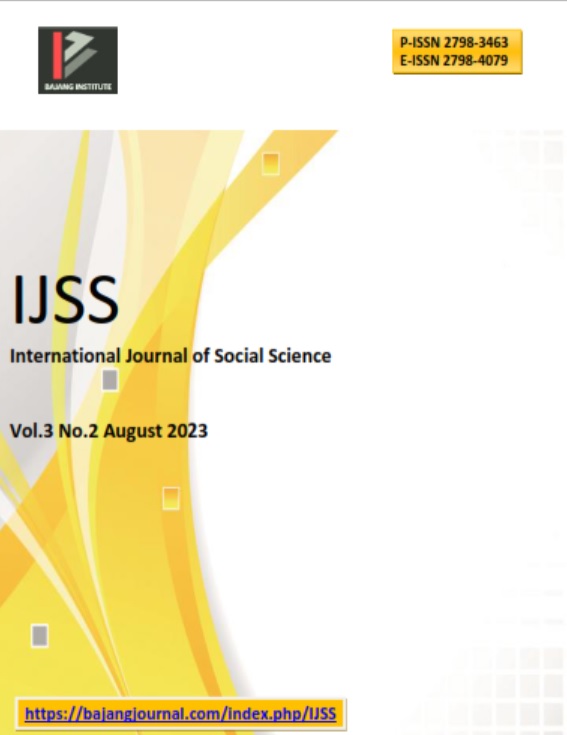BUILDING EMPLOYEE LOYALTY IN THE DIGITAL ERA AND PANDEMIC (STUDY AT THE TECHNICAL IMPLEMENTATION UNIT OF THE SOUTH SULAWESI PROVINCE FOOD CROPS AND HORTICULTURE PROTECTION AGENCY)
DOI:
https://doi.org/10.53625/ijss.v3i2.6294Keywords:
Loyalty, Job Satisfaction, Human Resource Management, Motivation, Stress, CommunicationAbstract
Organizational phenomena that are still being faced are coordination and consolidation, different qualifications of human resources, large work areas, and the lack of facilities (technology) and assistance facilities for the community. The purpose of this study was conducted to develop variables that influence Loyalty in the Digital Age and the COVID-19 Pandemic, in the Observers of Plant Pest Organisms (POPT) in South Sulawesi Province. The research method uses the Mix Method to determine the relationships and influences between variables, with 200 respondents. Selection of the sample using judgment sampling and data collection using a questionnaire. Data is processed using Structural Equation Modeling (SEM) using LISREL and SPSS. The results showed that the Human Resource Management variable had the most influence on building loyalty. Overall the variables of Human Resource Management Practices, Motivation, Communication, have a positive and significant effect on Job Satisfaction, but the variable that has the greatest influence on job satisfaction is the communication variable. Meanwhile, the stress variable has a negative effect on job satisfaction
References
Ana Slišković dan Zvjezdan Penezić, (2015). Descriptive study of job satisfaction and job dissatisfaction in a sample of Croatian seafarers, International Marit Health Vol. 66, No. 2: 97–105.
Cherry, Colin (1985). The Age of Access - Information Technology and Social Revolution. Croom Helm.
Hana Urbancová, dan Lucie Vnoučková, (2018). Impact of Employee Development in Agricultural Companies on Commitment, Loyalty and Performance, Acta Universitatis Agriculturae Et Silviculturae Mendelianae Brunensis, Vol. 66, No. 3.
Junaidah, Hashim, Yusof Ismail, dan Arif Hassan (2016). Formality of HRM Practices Matters to Employees Satisfaction and Commitment, Journal of Human Resources Management and Labor Studies, Vol. 4, No. 1, pp. 47-64.
Khaiwal Ravindra, Tanbir Signh, Sumar Mor, (2021), COVID-19 Pandemic and sudden rise in crop residue burning in India: issues and prospects for sustainable crop residue management, Environmental Science and Polllution Research 29
Luthan, Fred dan Mc. Farlin, (2012). Organizational Behavior, Singapore: Mc. Graw-Hill.
Mai Ngoc Khuong dan Vu Hai Yen (2016). Investigate the Effects of Job Stress on Employee Job Performance — A Case Study at Dong Xuyen Industrial Zone, Vietnam. International Journal of Trade, Economics and Finance, Vol. 7, No. 2.
Mathis, L. Robert dan John H. Jackson. 2012. Strategic Human Resources Management, edisi 13, Southwestern: Chengange Learning.
M. Näther, J. Stratmann, C. Bendfeldt dan L. Theuvsen (2015). Which factors influence the job satisfaction of agricultural employees? Proceeding of the 24 th, Congress Rural Societies in a Neoliberal World.
Mullins, LJ. (2008/5). Management and Organizational Behaviour. Prentice hall. UK 7th Ed. 88(431):1052-1058.
Roslina Kamaruddin, Norehan Abdullah, dan Mohammad A. Ayob (2018). Determinants of job satisfaction among Malaysian youth working in the oil palm plantation sector. Journal of Agribusiness in Developing and Emerging Economies, Vol. 8 Issue: 4, pp. 678-692.
Robbins, P. Stephen. dan Timothy A. Judge, (2013). Organizational Behavior. New Jersey: Prentice Hall.
Seema, Mehta, Tarika Singh dan S.S. Bhakar (2010). Employee Loyalty towards Organization -A study of Academician, Int.J.Buss.Mgt.Eco.Res., Vol 1(1),2010,98-108.
Umar, Husein, (2019). Metode Riset Manajemen Perusahaan, Jakarta, PT. Gramedia Pustaka Utama. Jakarta.
Downloads
Published
How to Cite
Issue
Section
License
Copyright (c) 2023 Heru Setyoko, Sri Widyastuti, Edie Toet Hendratno

This work is licensed under a Creative Commons Attribution 4.0 International License.

















